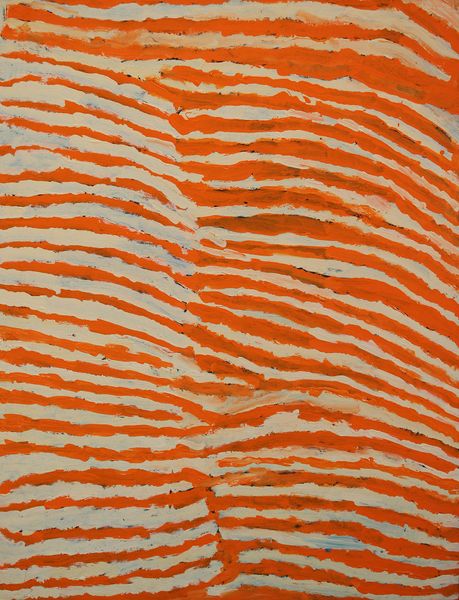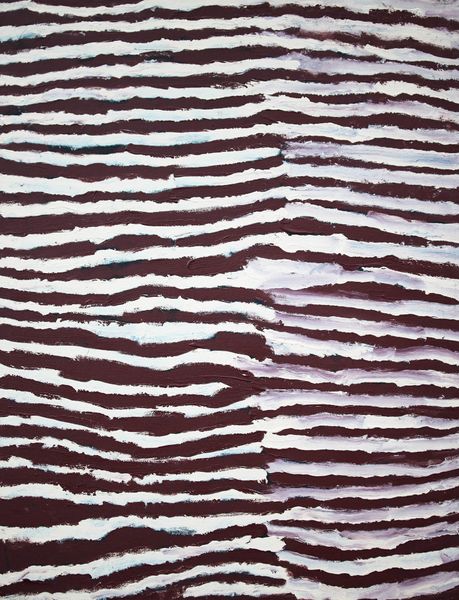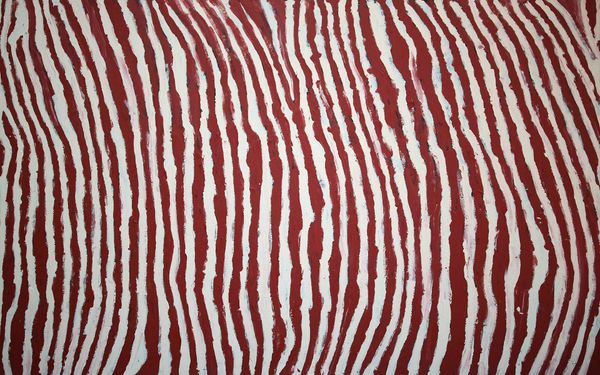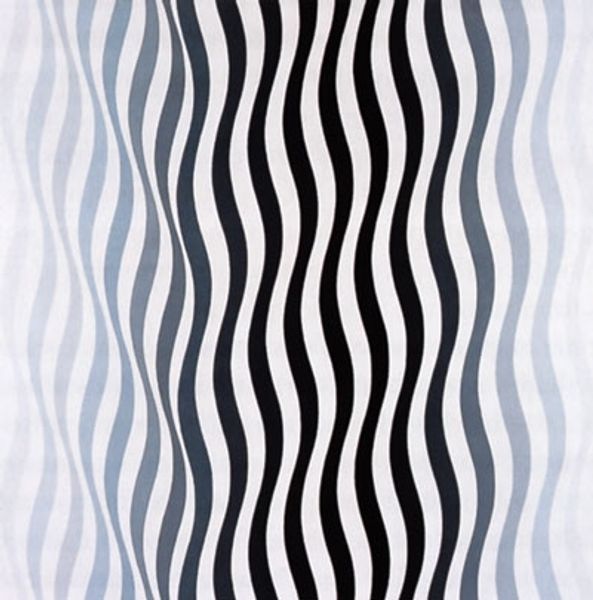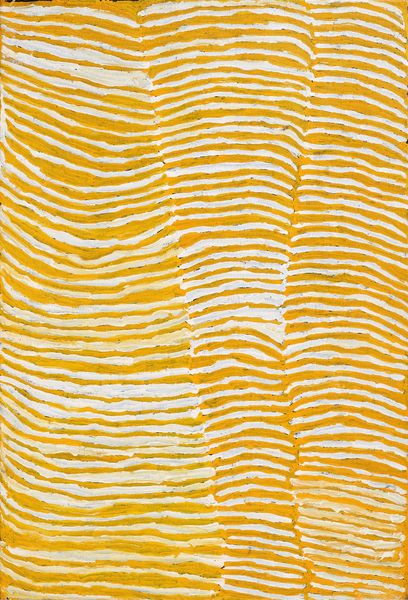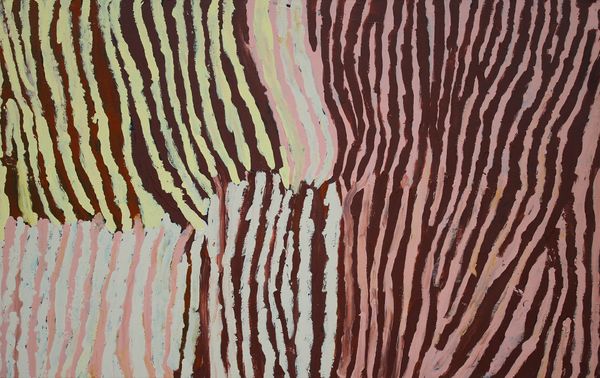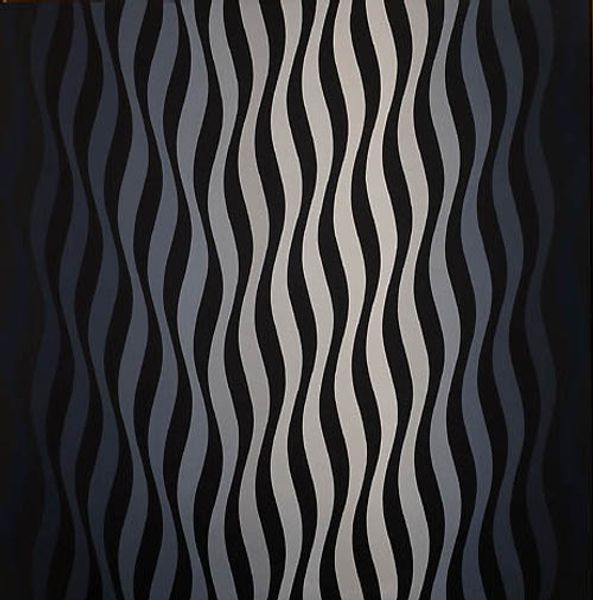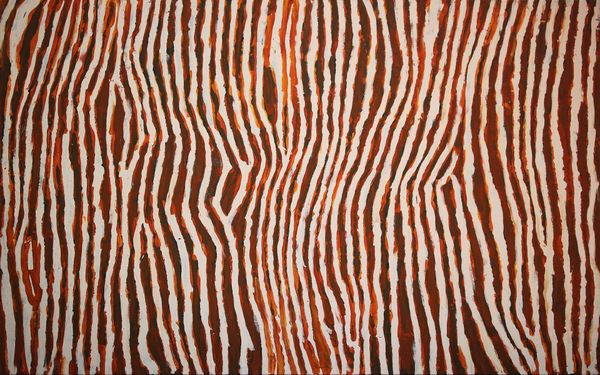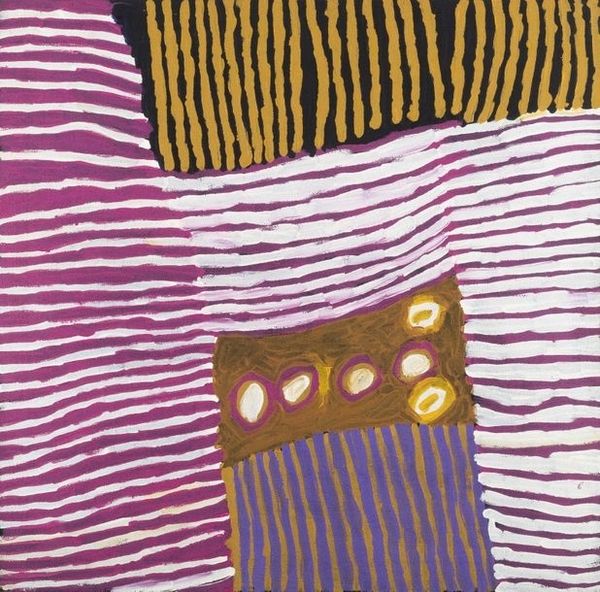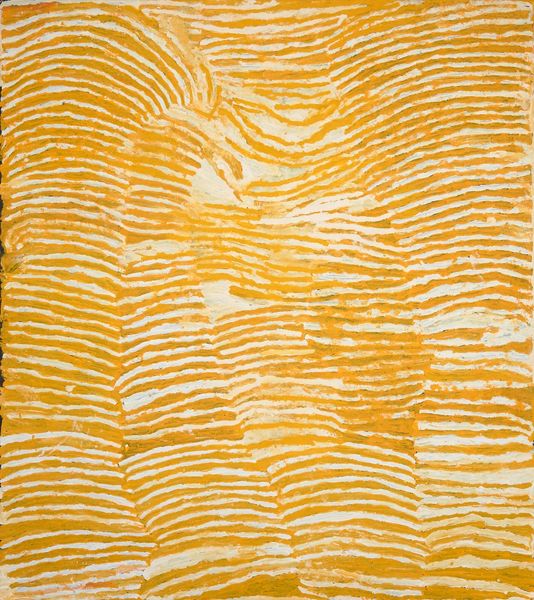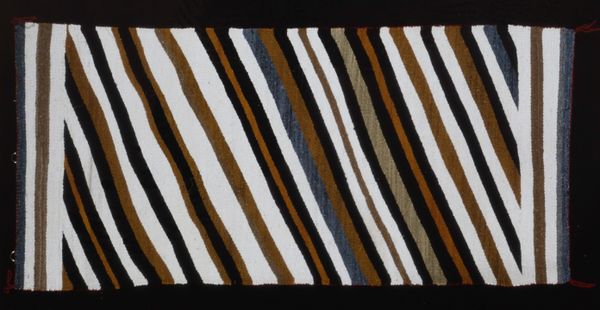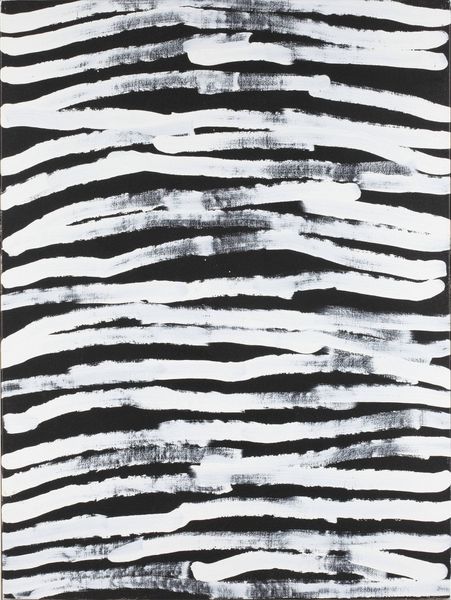
painting
#
natural stone pattern
#
painting
#
geometric pattern
#
abstract pattern
#
organic pattern
#
repetition of pattern
#
vertical pattern
#
abstraction
#
line
#
pattern repetition
#
imprinted textile
#
layered pattern
#
organic texture
Copyright: Makinti Napanangka,Fair Use
Editor: We're looking at "Kungka Kutjarra (Two Women/Hair String Ceremony)" by Makinti Napanangka, created in 2008 using acrylic paint. I'm immediately struck by the rhythmic quality of these lines, and the very tactile nature of the paint application. It makes me wonder, how should we interpret this piece? Curator: Considering its materials and process, it's essential to look at acrylic paint itself. Introduced mid-20th century, it offered artists, particularly Indigenous artists in remote communities, easier access and durability compared to traditional ochres. What does this shift in materials mean in terms of production and accessibility? Editor: So, the use of acrylic paint wasn't just a practical choice; it fundamentally changed how the artwork could be produced and distributed. Were traditional materials difficult to access? Curator: Precisely. And more than that, acrylics, unlike ochres, were commercially produced, embedding the artwork in a network of trade and exchange. Napanangka's process also involved building up layers, a testament to labor and time but also reflective of the layered meaning embedded in the ceremony. Do you think it challenges our typical ideas of art as separate from everyday life and labor? Editor: Absolutely! By focusing on the materials and production, it connects the artistic practice directly to social and economic systems. The repetitive nature also makes me think of labor, a collective effort. Curator: And the 'Hair String Ceremony' connects this labor to a ritual practice, grounding the piece further into the lived experiences of these women. What have we learned? It prompts us to consider how the means of making, using commercial acrylics, shifts how art functions within the Indigenous community and beyond. Editor: Right. Examining the art in terms of material shifts and their connections to both ceremony and labor helps understand Indigenous contemporary art. Curator: Indeed. Seeing how materials and the artist’s process inform the social and cultural understanding of the artwork.
Comments
No comments
Be the first to comment and join the conversation on the ultimate creative platform.
